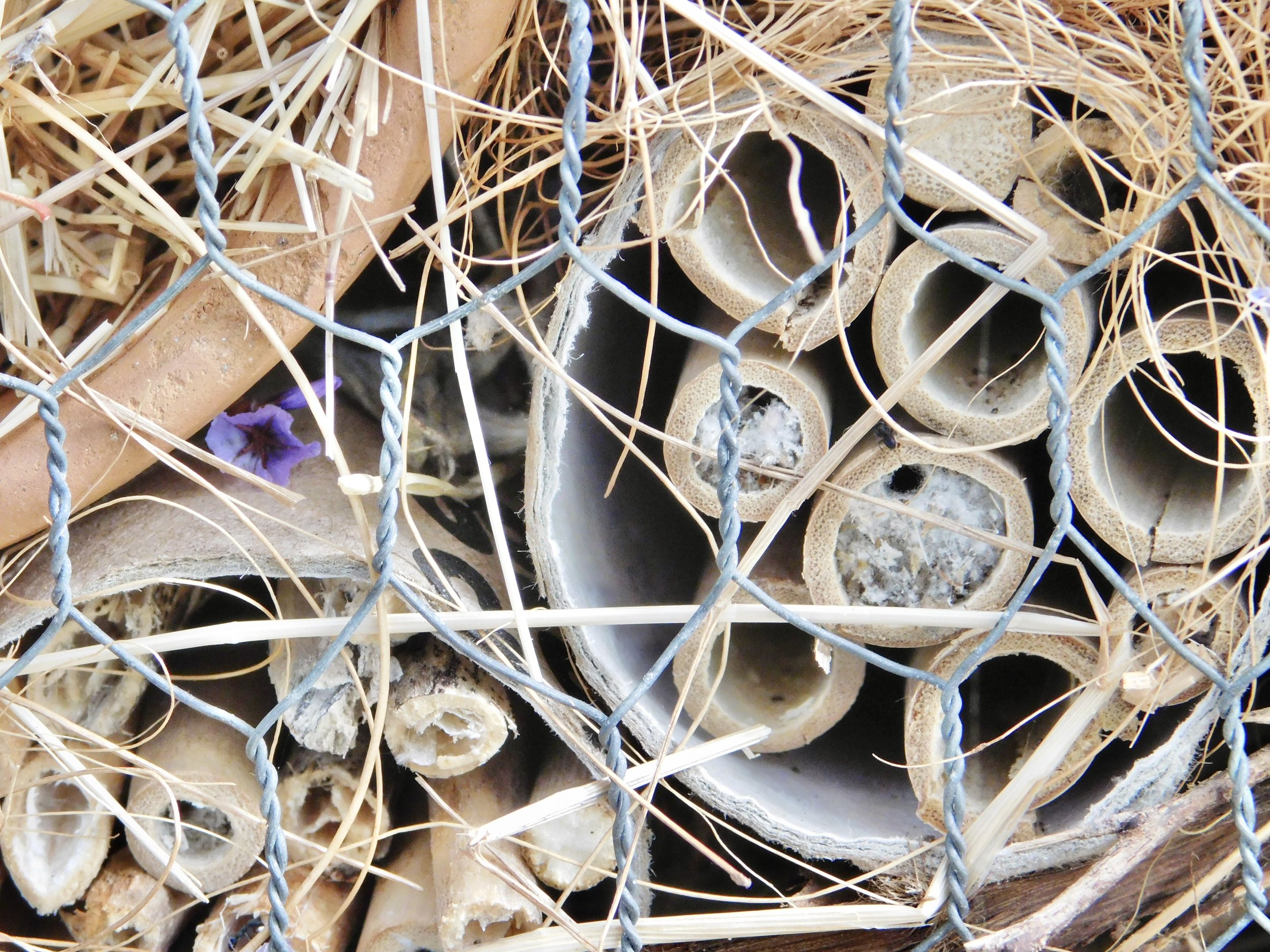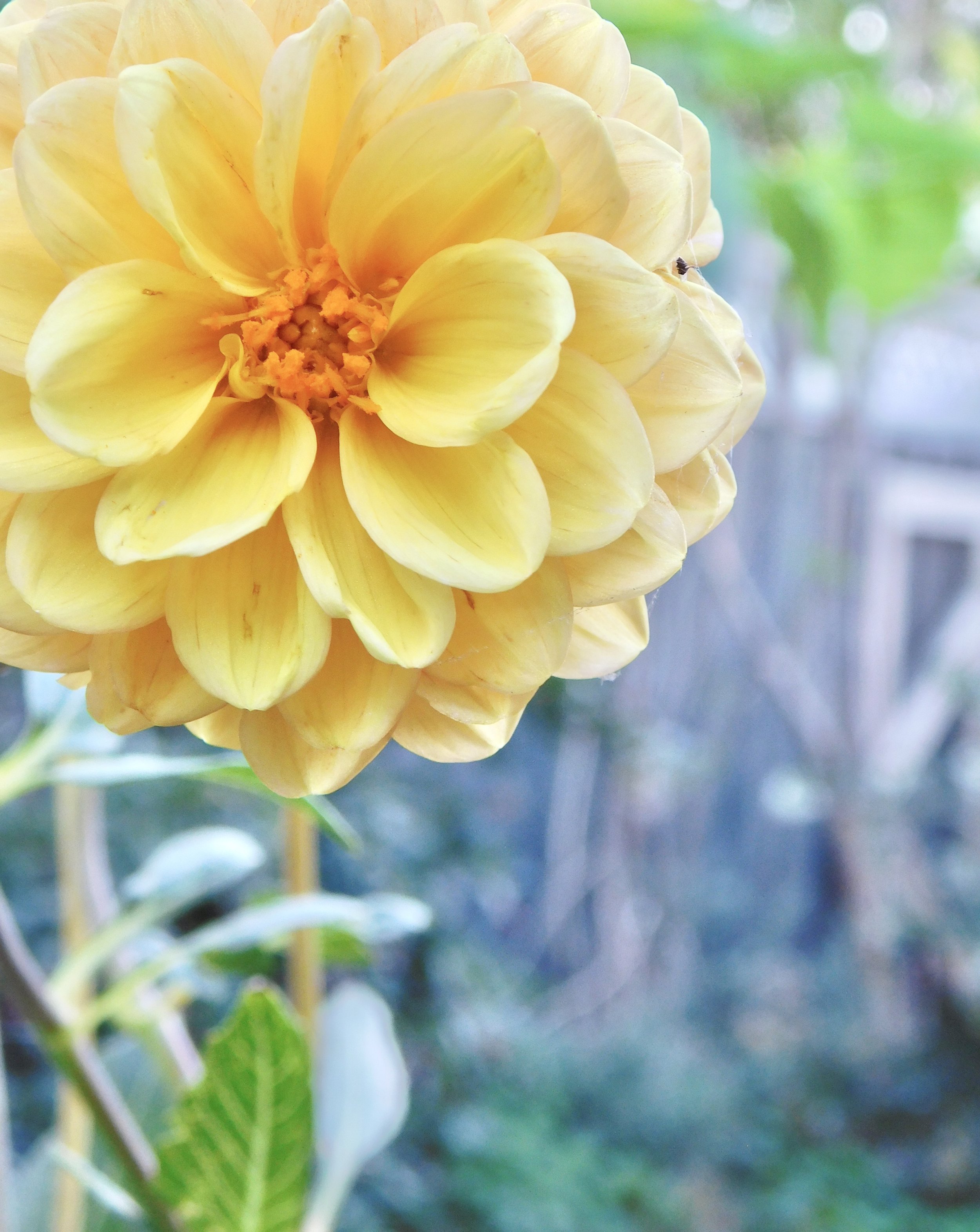Garden Guardians
30 April, 2025
Have you ever come across this sight in your garden, tiny eggs on the end of thin stalks? If you have, you can rest easy knowing your garden is in good hands. The tiny eggs pictured above are lacewing eggs. Lacewings are beneficial insects who prey on aphids and other soft-bodied insects. Adult lacewings are nocturnal so it's rare to see them in the day. I found this delicate arrangement of eggs on the underside of a volunteer broccoli plant that had become infested with a white fly colony and some aphids. Now, a few weeks after I made this discovery, the broccoli plant is growing well and the white fly colony and aphids are under control.
I’ve always been in awe of Nature and the intricate system that’s been in place since time began. A system that always works to achieve balance. On many occasions, I’ve seen firsthand that when we work in partnership with Nature, magic happens. We start to see how everything really is connected, making us more mindful of our actions. For every action there is a reaction, good or bad depending on the choices we make.
Some ways we can help support our beneficial insects and other “Garden Guardians” are -
Avoid using pesticides & synthetic fertilisers
Plant a diverse range of plants to provide different types of food sources and habitat
Towards the end of a growing season, leave some of your vegetables & annual herbs (such as basil, mizuna, dill, rocket, bok choy & fennel), in the ground to flower and set seed
Make an insect hotel
Provide safe water sources
Practice no-dig gardening and permaculture techniques such as ‘chop n drop’.
Mulch your garden with wood chips, straw or dried leaves
If removing any pest-infested plants, set aside and leave to dry, to allow time for any beneficial insects and/or their larvae to move on, before disposing of the plant residue
Leave a few dried flower stalks on living plants to create mini homes for spiders & native bees
Create a dead (or dry) hedge for habitat
“Tug on anything in nature and you will find it connected to everything else.”
Garden Orb Weaving Spiders,
Over the last few years we’ve seen an increase in Garden Orb Weaving Spiders in our garden. Orb-weavers are a Garden Guardian, helping to keep insect populations such as flies, grasshoppers, mosquitoes, beetles, wasps and moths in check. Orb-weavers can be seen weaving their large, intricate webs at night, especially at this time of year, so keep a look-out for their webs in the morning, often arranged across pathways or between plants. During the day these garden spiders will hide away, cleverly camouflaged by their surroundings. A fun nighttime activity is to grab a flashlight, head outdoors and quietly observe them in action.
Insect Hotel Update,
I was excited to see that a few insects have checked into our insect hotel (see photo above, on the right). As temperatures become colder, some beneficial insects such as hoverflies, native bees, ladybirds and lacewings will be looking for places to hibernate over winter. Providing them with safe places to take shelter over winter helps them out. In return, they’ll be ready to be back on patrol in your garden, searching for any pest populations, as soon as spring arrives.
Recycled Paper Greeting Cards,
To help shine a light on the little beings who work quietly behind the scenes, keeping our gardens in balance, I’ve created a series of greeting cards featuring my nature photography. The greeting card pictured above features a beneficial insect (a hoverfly) feeding on the nectar of a flowering bok choy.
My nature images are printed on 100% recycled paper, using vegetable-based inks and are home compostable. If you’d like to browse my range of greeting cards you can visit my online shop here.
Autumn Plantings,
I’ve nearly finished the Autumn Plantings, with just a few more gaps to fill. So far I’ve either planted or sown bok choy, rocket, kale, lettuce, mizuna, mini cabbage, red leg onions, borage, calendula, coriander, cornflower, savoy cabbage, giant red mustard, Chinese broccoli, Japanese cabbage, silverbeet, beetroot and carrots.
When I came home the other day with an armful of seedlings and a few new plants, I was greeted by Rob saying, “how can you fit anymore plants in the garden?” I laughed and replied, “You’ll see!” Living in town I sometimes do wonder what will happen when I fill all the gaps, but for now there’s still room for….”just a few more!”
A Vintage Gem
We visited Balingup the other weekend to attend the Small Farm Field Day. Whilst we were there, I convinced Rob to extend our visit a little longer, so I could pop into a few of the antique & secondhand shops. I have to admit I have a bit of a weakness for old cane baskets so when my eyes fell on the basket (pictured above) I knew it was a little special. Previously a fisherman’s basket, it was in pretty good condition and only missing its shoulder strap. As I happily carried it to the car I imagined the stories this little basket could tell, of the people who had owned it and the life that they’d had.
At first I thought I’d use it to store my plant labels, but felt in honouring of it’s past life it needed to be used more regularly, so it’s now my ‘sowing’ basket, keeping all my little bits and pieces needed in the one place, ready for the next seed sowing time.
Feijoa & Pomegranate Season
Feijoas (or Pineapple Guava) are one of my favourite fruits with their unique, fragrant flavour. I like to cut them in half, then scoop out the flesh with a teaspoon. We’ve had an abundance of them this year, perfect for gifting to neighbours and friends over Easter. How do you like to enjoy your feijoas?
The first pomegranate we tried for the season was a little too sour so I extracted the seeds, added some fresh stevia leaves and processed them all in a blender. It was better to taste but I still think the recipe might need some more tweaking…
Honeycomb Dahlia,
Sharing with you this beautiful pompom dahlia, “Honeycomb”, who’s gifted us with a constant display of flowers over the last few months and has been such a joy to see each day.
Til next time, best wishes,
Alisa 🌼🍃








